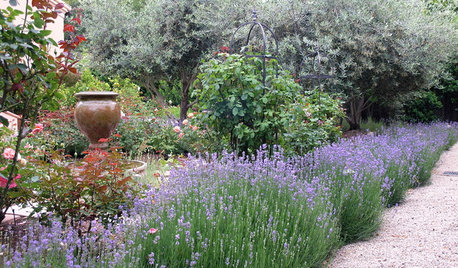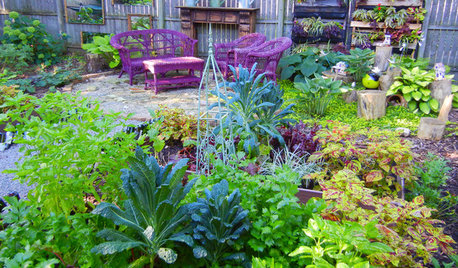any one grow perilla?
vieja_gw
13 years ago
Related Stories

HOUSEPLANTSHow to Grow Orchids Indoors
Orchids are the exotic aristocrats of the flower world and can make themselves comfortable in almost any home
Full Story
MOST POPULARSummer Crops: How to Grow Sunflowers
Savor snack-tastic sunflower seeds once the radiant blooms have faded — if the birds have saved you any, that is
Full Story
FLOWERSHerb Garden Essentials: Grow Your Own Fragrant Lavender
This do-it-all plant is ideal for almost any garden, and its uses are abundant around the home
Full Story
FUN HOUZZScreen Style Forecast: When the 'Girls' Grow Up
We predict which decorating styles the girls on HBO's new series will choose when their taste matures. Do any match yours?
Full Story
GARDENING GUIDESHerb Garden Essentials: Grow Your Own Delicious Mint
Pull out a pot for this one. Mint's spreading habit and hard-to-kill nature can be a blessing — if you're properly prepared
Full Story
EDIBLE GARDENSSummer Crops: How to Grow Tomatoes
Plant tomato seedlings in spring for one of the best tastes of summer, fresh from your backyard
Full Story
GARDENING GUIDESWhat Kind of Roses Should You Grow?
Want to add the beauty of roses to your garden? Find out which ones, from old-fashioned to modern, are right for you
Full Story
HOUZZ TOURSMy Houzz: A Grand Overhaul for a Growing Family
A suburban home's top-to-bottom remodel creates plenty of room for entertaining and for little ones
Full Story
GARDENING GUIDESShades of Vegetable Gardens: Growing Edibles in Less Sun
See how one gardener produces a veritable feast of vegetables and herbs under a canopy of shade
Full Story
HOUSEPLANTS10 Top Plants to Grow Indoors
Brighten a room and clean the air with a houseplant that cascades artfully, stretches toward the ceiling or looks great on a wall
Full StorySponsored
Columbus Design-Build, Kitchen & Bath Remodeling, Historic Renovations
More Discussions










Daisyduckworth
biscgolf
Related Professionals
Owings Mills Landscape Architects & Landscape Designers · Palm Springs Landscape Architects & Landscape Designers · Matthews Landscape Contractors · Brookfield Landscape Contractors · Byram Landscape Contractors · Fort Myers Landscape Contractors · Mission Landscape Contractors · Monterey Landscape Contractors · Oakland Landscape Contractors · Reedley Landscape Contractors · Golden Valley Landscape Contractors · Allen Roofing & Gutters · Plainfield Roofing & Gutters · Schenectady Roofing & Gutters · Wilmette Roofing & Guttersfatamorgana2121
weedlady
vieja_gwOriginal Author
seysonn
mid12nt
californian
seysonn
bzzzz
joraines
fatamorgana2121
sam_md
vieja_gwOriginal Author
Charles Hammond
Charles Hammond
Huyen Kichen